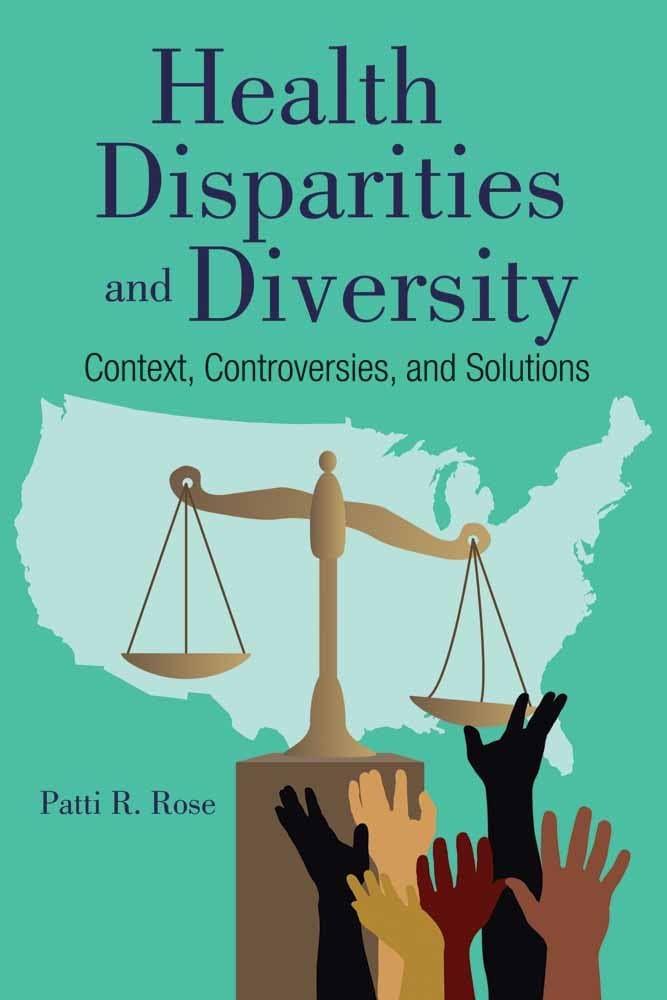Title: Uncovering Resilience: The Overlooked Champions of Health Equity
In the ongoing battle against health disparities, a select group of advocates and organizations are stepping forward to tackle inequalities that leave marginalized communities at a disadvantage. However, despite their critical contributions, these individuals often remain in the shadows, receiving little recognition for their tireless efforts. A recent article from the Cornell Chronicle sheds light on the dynamics at play, revealing that those most willing to confront health inequities frequently go unnoticed by the broader public. As the nation grapples with persistent disparities exacerbated by social and economic factors, understanding the profiles of these overlooked champions may be essential to fostering a more equitable healthcare landscape. This article explores the challenges they face, the strategies they employ, and why amplifying their voices is crucial for driving meaningful change.
Overcoming the Silence on Health Disparities
Addressing health disparities is a pressing issue that often remains in the background, overshadowed by more prominent healthcare discussions. Those who are most eager to confront these inequalities—such as community leaders, advocates, and researchers—frequently find their efforts overlooked. The struggle to amplify their voices has intensified, especially with the COVID-19 pandemic highlighting existing inequalities. More attention needs to be directed towards ensuring that these key stakeholders are not just heard but are actively involved in the policy-making processes that affect marginalized communities.
There are several factors that contribute to the silence surrounding health disparities, including:
- Lack of funding: Essential programs aimed at reducing health disparities often operate on shoestring budgets, limiting their impact.
- Insufficient representation: Many minority groups remain underrepresented in public health discussions, preventing their unique challenges from being recognized.
- Data neglect: Without comprehensive data, it becomes challenging to highlight and address these disparities effectively.
To combat this silence, collaborative efforts between community organizations, academic institutions, and policymakers are crucial. By fostering partnerships and facilitating open dialogues, we can better ensure that those most affected by health disparities are leading the conversations about their own health outcomes.
Highlighting Unsung Heroes in Health Advocacy
In the realm of health advocacy, numerous individuals and organizations diligently work behind the scenes, addressing health disparities that often go unnoticed. These unsung heroes include community health workers, grassroots activists, and patient advocates who tirelessly campaign for equitable access to healthcare. Their efforts are crucial for fostering understanding and implementation of health policies that benefit marginalized communities. While they may lack the spotlight, their influence is profound—leading initiatives to educate the public, mobilize resources, and bridge gaps in healthcare delivery.
Highlighting the work of these dedicated individuals can provide valuable insights into the complexities of health inequities. Many of them share common traits that empower their advocacy work: passion, resilience, and community connection. These characteristics not only drive their efforts but also inspire others to join the fight. Here are a few notable contributions from unsung heroes in the field:
- Developing tailored health programs for underserved populations
- Advocating for policy changes that prioritize minority health
- Providing essential health education and resources
Such contributions, while often overshadowed by more prominent figures, are fundamental to transforming the healthcare landscape and ensuring that everyone has the opportunity to lead a healthy life.
Strategies for Amplifying Marginalized Voices in Health Discussions
To foster inclusivity and equity in health discussions, several strategies can be implemented to ensure marginalized voices are not only heard but actively integrated into decision-making processes. Engaging communities directly through grassroots initiatives can facilitate open dialogues and build trust. This approach empowers individuals from marginalized backgrounds to share their unique experiences and insights related to health disparities. Additionally, leveraging digital platforms to amplify these voices can enhance visibility and reach. Examples of these strategies include:
- Community-led workshops: Organizing events that prioritize community participation encourages diverse input.
- Collaborative research projects: Partnering with local organizations can bring to light the specific health issues faced by marginalized populations.
- Utilizing social media campaigns: Targeted campaigns can effectively amplify stories and issues that matter to these communities.
Furthermore, creating institutional channels where marginalized groups can communicate their concerns directly to policymakers is vital. Establishing advisory boards composed of community leaders and advocates ensures continuous representation in health discussions. It is equally crucial that health organizations receive training in cultural competency, ensuring they are equipped to engage appropriately and sensitively with diverse communities. Implementing these approaches can significantly reshape how health narratives are constructed, leading to more equitable health outcomes. Below is a summary of effective institutional strategies:
| Strategy | Description |
|---|---|
| Policy Advocacy | Lobbying for health policy changes that prioritize marginalized communities. |
| Funding Initiatives | Allocating resources specifically for programs targeting health disparities. |
| Public Awareness Campaigns | Raising awareness about health inequities through media and public outreach. |
To Wrap It Up
the findings highlighted in the Cornell Chronicle article underscore a pressing need for greater recognition and support for individuals and organizations actively working to bridge health disparities. While these stakeholders often operate in the shadows, their impactful initiatives are crucial in fostering equitable healthcare access and outcomes. As discussions surrounding health equity continue to gain momentum, it is imperative that we amplify the voices of those dedicated to this vital cause. Recognizing and valuing their contributions will not only enhance our understanding of health disparities but also pave the way for meaningful progress in creating a more just healthcare system for all. As we move forward, it is essential to prioritize and invest in these efforts, ensuring that no one is overlooked in the quest for health equity.
